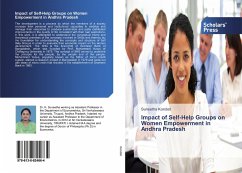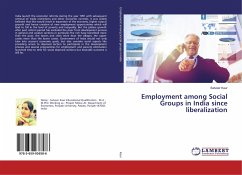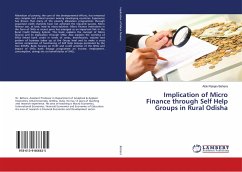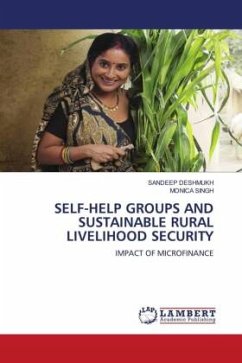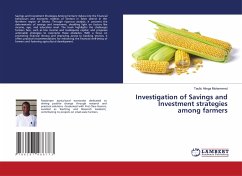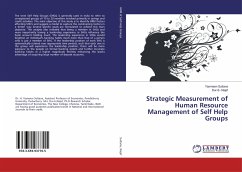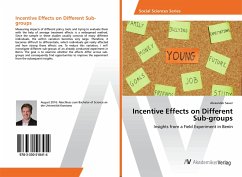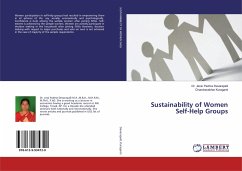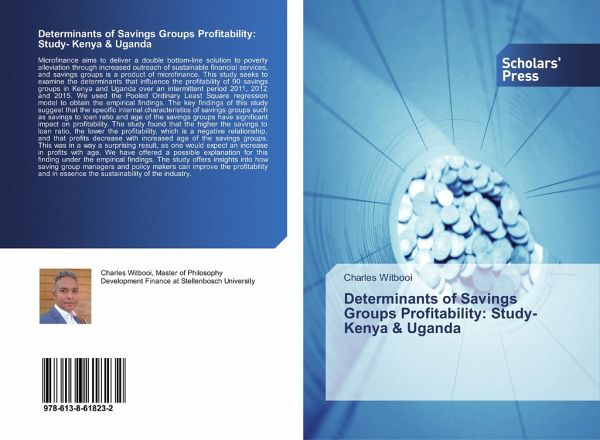
Determinants of Savings Groups Profitability: Study- Kenya & Uganda
Versandkostenfrei!
Versandfertig in 6-10 Tagen
30,99 €
inkl. MwSt.

PAYBACK Punkte
15 °P sammeln!
Microfinance aims to deliver a double bottom-line solution to poverty alleviation through increased outreach of sustainable financial services, and savings groups is a product of microfinance. This study seeks to examine the determinants that influence the profitability of 90 savings groups in Kenya and Uganda over an intermittent period 2011, 2012 and 2015. We used the Pooled Ordinary Least Square regression model to obtain the empirical findings. The key findings of this study suggest that the specific internal characteristics of savings groups such as savings to loan ratio and age of the sa...
Microfinance aims to deliver a double bottom-line solution to poverty alleviation through increased outreach of sustainable financial services, and savings groups is a product of microfinance. This study seeks to examine the determinants that influence the profitability of 90 savings groups in Kenya and Uganda over an intermittent period 2011, 2012 and 2015. We used the Pooled Ordinary Least Square regression model to obtain the empirical findings. The key findings of this study suggest that the specific internal characteristics of savings groups such as savings to loan ratio and age of the savings groups have significant impact on profitability. The study found that the higher the savings to loan ratio, the lower the profitability, which is a negative relationship, and that profits decrease with increased age of the savings groups. This was in a way a surprising result, as one would expect an increase in profits with age. We have offered a possible explanation for this finding under the empirical findings. The study offers insights into how saving group managers and policy makers can improve the profitability and in essence the sustainability of the industry.



